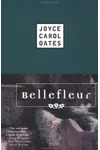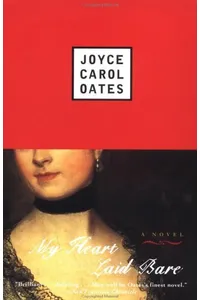Step into the hauntingly beautiful world of Joyce Carol Oates’ Gothic Saga, where sprawling mansions, supernatural whispers, and complex human desires collide in a mesmerizing blend of mystery, horror, and historical fiction. This five-book series, a cornerstone of modern Gothic literature, invites readers to explore the shadowy corners of American life through richly layered narratives and unforgettable characters.
With its vivid settings and intricate storytelling, the Gothic Saga captures the imagination, offering a thrilling escape into worlds where the past refuses to stay buried. Whether you’re a fan of Gothic novels or new to the genre, Oates’ masterful prose and psychological depth make this series a must-read adventure.
How the Gothic Saga Began
Joyce Carol Oates, a literary powerhouse with over 70 books to her name, launched the Gothic Saga in 1980 with Bellefleur. Inspired by the Gothic tradition of Edgar Allan Poe and the Brontë sisters, Oates sought to reimagine the genre through a distinctly American lens. Written primarily in the early 1980s, the series reflects her fascination with the psychological and societal undercurrents of human behavior, blending supernatural elements with sharp social commentary. Each novel stands alone, unbound by a single narrative thread, yet united by Oates’ signature style and thematic depth.
The Heart of the Gothic Saga
The series kicks off with Bellefleur (1980), a phantasmagoric tale of the wealthy Bellefleur family living in a haunted New York mansion on Lake Noir. Ghosts, shape-shifting beasts, and a mysterious European nobleman weave a tapestry of greed, power, and tragedy. A Bloodsmoor Romance (1982) transports readers to the 19th century, following the rebellious Zinn sisters as they defy Christian marriage norms, encountering figures like Mark Twain and exploring themes of sexuality, suffrage, and spiritualism.
Mysteries of Winterthurn (1984), a collection of dark detective stories, traces Xavier Kilgarvan’s journey from boy to man amidst murder and mayhem. My Heart Laid Bare (1998) shifts to a more restrained narrative, chronicling the Licht family’s melodramatic saga in early 20th-century America, while The Accursed (2013) unleashes a supernatural curse on Princeton, New Jersey, blending historical figures like Woodrow Wilson with demonic forces. The series’ settings—crumbling estates, eerie towns—amplify its Gothic atmosphere, while themes of class struggle, racism, misogyny, and the human psyche resonate across each book.
Oates’ lush, atmospheric prose and non-linear timelines create a dreamlike reading experience, challenging readers to piece together the puzzle until the final pages. Her ability to merge the grotesque with the poignant makes the Gothic Saga a standout in the genre, offering both thrills and profound insights.
Why the Gothic Saga Resonates
The Gothic Saga has left an indelible mark on modern Gothic literature, earning praise for its bold fusion of horror and social critique. Fans and critics alike celebrate Oates’ fearless exploration of America’s moral and cultural complexities, from the horrors of racism in The Accursed to the feminist undertones of A Bloodsmoor Romance. Its influence extends to contemporary authors who draw on Gothic traditions to probe societal issues, cementing Oates’ legacy as a literary trailblazer.
Despite its niche status, the series captivates readers with its immersive worlds and timeless questions about human nature. Its enduring appeal lies in Oates’ ability to make the supernatural feel deeply personal, inviting readers to confront their own fears and desires.
- Publication Years: 1980–2013
- Number of Books: 5
- Notable Recognition: Oates won the National Book Award and PEN/Malamud Award, with the series lauded by Stephen King.
Ready to lose yourself in a world of mystery and intrigue? Grab Bellefleur and dive into the Gothic Saga’s spellbinding universe today!


